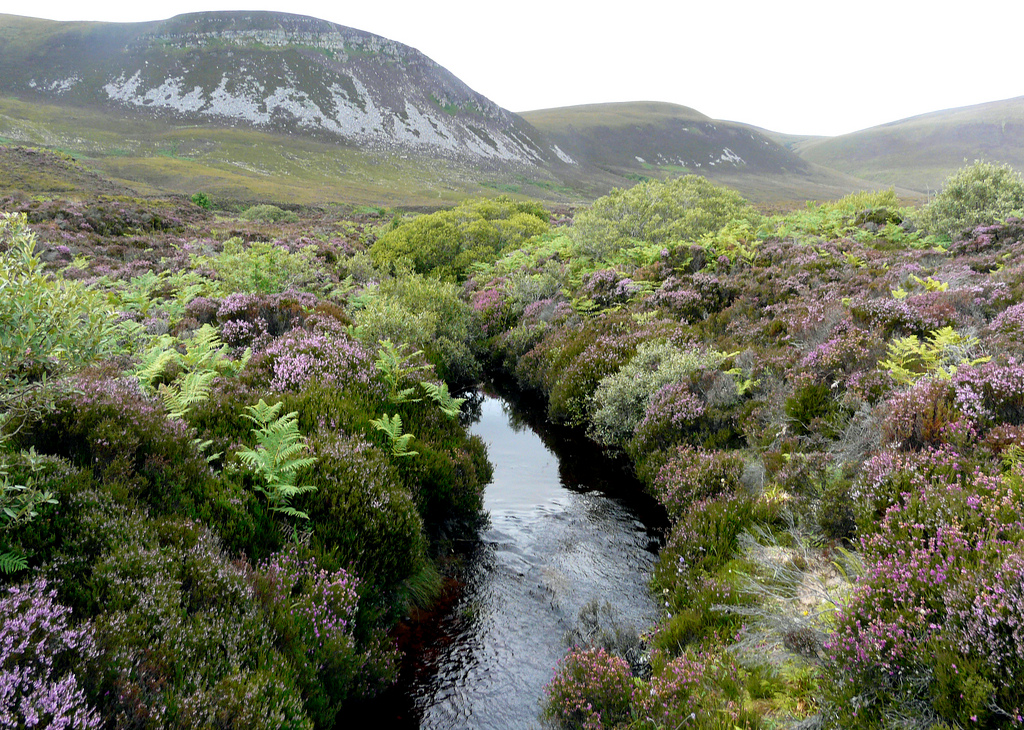Just past the main entrance to the RSPB Hoy Reserve is Sandy Loch — there is basic car parking and you can walk around the loch or through the glen to Berriedale Wood and Rackwick bay.
Flora
There are some wonderful wild flowers to be discovered around the reserve, from ragged robin and orchids on roadside verges to Arctic alpines such as purple saxifrage. Look out for three species of heather on the moorland as well as insect eating sundews and butterwort.
Great Skua
Up to 1900 pairs of great skuas (locally called bonxies) nest on the reserve. The Hoy colonies comprise almost 12% of the world population of these impressive birds. Bonxies are very active in defending their nests and young and will dive bomb if you get too close! If you are attacked, you should hold your hand (or a stick) above your head and move away – once you are far enough away from their chicks they will leave you alone.
Mountain hare
Hoy is home to the mountain hare. Mountain hares turn entirely white in the winter and have a bluish tinge to their brown summer coats, they feed on heather and other moorland vegetation.
Peregrine
The peregrine falcon is one of up to six species of birds of prey seen around the reserve. Several pairs of peregrine usually nest here each year. These spectacular birds are the fastest fliers in the world, reaching speeds over 100 miles per hour as they hunt. Other ‘raptors’ to look out for are hen harriers, merlins, buzzards, kestrels and sparrowhawks.
Red Throated Diver
Around 20 pairs of these beautiful birds nest on the reserve each year. Listen for their haunting courtship calls around the coast during the spring and look out for adults bathing and fishing on the Sandy Loch. The divers leave the island in the autumn to spend the winter at sea.
Seabirds
If you are walking around the coast between April and July look out and listen for our beautiful seabirds, including puffins, guillemots, razorbills, kittiwakes, fulmars and black guillemots.
Berriedale Wood is the most northerly native woodland in the UK, pollen analysis suggests woodland of this type was more widespread in Orkney and Shetland around 7,000 years ago.
We want you to enjoy your visit to Hoy ~ please follow these simple guidelines for your safety:
You are advised to carry a map and compass if you wish to explore away from the footpaths.
Please be cautious at all times on the cliffs and avoid the areas in windy and foggy conditions.
The weather changes rapidly on Hoy, it is advisable to dress appropriately with warm, waterproof clothing and stout footwear.
Due to fire risk we request visitors restrict camping to the designated site off the nature reserves ~ ~ Burnmouth Bothy.
Please remove rubbish to keep our island beautiful.
Please keep dogs under close control to avoid disturbing sheep and wildlife.
Please do not light fires on moorland.
Cyclists should keep to the public roads to avoid damage to the fragile, peaty soil.
![]() Check out the RSPB Hoy Reserve facebook page
Check out the RSPB Hoy Reserve facebook page
 Follow this link to the RSPB Hoy website
Follow this link to the RSPB Hoy website






Hi,
I am trying to find the name and location of a valley I helped fence to encourage tree growth on a BTCV (may have been an STCV program) working holiday back in the later 1980s – might have been 1988.
We had accommodation on Hoy – the Rackwick Hostel looks very likely, and the site was a drive away but I can’t recall how long a drive.. From memory one end of the valley or large gulley was very close to a vehicle access track. (There were small rowan, hazel and willows in it then, and I wonder how it developed). Memory can be poor but the site seemed several hundred meters long. Any ideas please?